This evening I started the project of cutting an access port into the first stainless steel tank. There has to be a quicker way. I spent over 1.5 hours trying to drill a pilot hole so I could use the bi-metal hole saw. I used cutting oil, a new bit made for metal, and used slow rpms. After 1.5 hours I still had not even broken through to the interior of the tank. At this rate it will take 20-30 hours just to get the access hole cut and the bolt holes drilled. Someone please tell me there is a trick to this that I’m missing.

SeaBreeze - Not sure your level of handiness; if you're having trouble with the metal of your tank I would go find a like/same piece of scrap somewhere to experiment on first to try out a couple things...
This past fall/winter I did both fuel tank and a water tank access ports from SeaBuilt. My fuel tanks are black iron - pretty thick on my jigsaw but certainly not stainless toughness while my water tank is stainless but much thinner. I tackled both in the same manner and both went relatively easy. First, I traced my bolt and hole pattern from the front plate. Then I carefully center punched every bolt hole and my start hole for my jigsaw. After that I started will a small, sharp drill (I think 1/8 was what I used), then stepped up I think 2-3 times to my final size. I go slow slow, use oil, and a lot of pressure. If there isn't curls of metal coming off the bit is not sharp, the initial hit with the center punch didn't set, or you're not going slow enough with enough pressure.
This youtube video shows good technique for stainless steel -
its also an example of the same type of technique I describe above for drilling holes. He's drilling in some pretty thick angle, but the principle is the same.
Same thing when you get to using the jigsaw on stainless (or regular steel), turn the speed down, but you won't want to use a lot of pressure or you'll kink the blade.
I didn't take pictures in between, but here are pics of a six inch access port cut into an approx 150 gallon water tank. (Someone had in the past installed a fuel tank style level sensor which eventually rotted and deposited its corroded metal bits on the bottom of the tank

requiring a hole to be added so we could clean up the debris hopefully preventing the tank itself rotting through... we'll see! I want to say that marking, drilling, and cutting out this hole took me maybe 45 minutes, but I didn't time it. It is the 6 inch size, not the full 8 inch that I used for the fuel tanks.
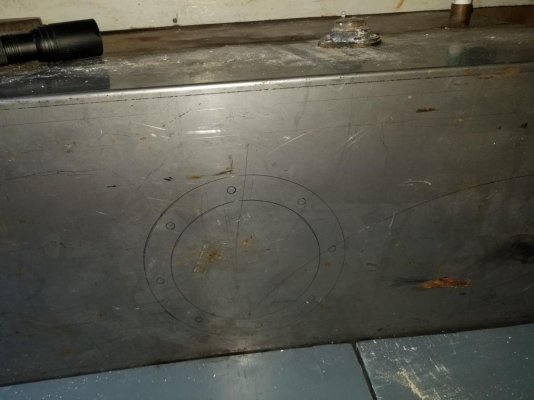
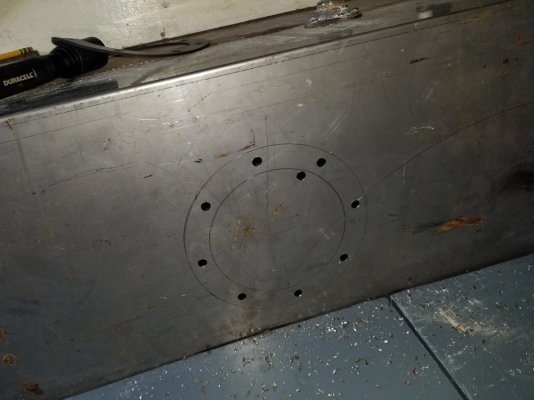
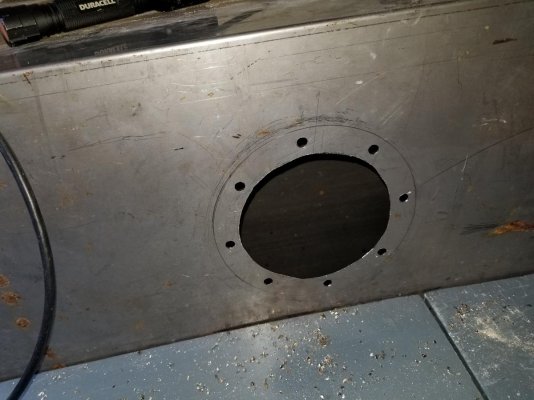
On our fuel tank project we really only had settled asphaltene gunk and some corrosion that we cleaned out and did some preventative maintenance on, but I feel for where you are. I spent a couple weeks each on my fuel tanks (laying on one side port, the other side starboard, up over a tranny and a stringer onto part of the hull, reaching up into the tank to clean it) but in the end I have tanks with access ports that I can get to again in the future, or rather then next guy can! I'm pulling for you! I think if you search my threads you can find some more pics of my fuel tank project if your interested. Good luck!

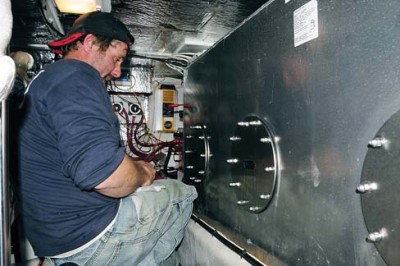
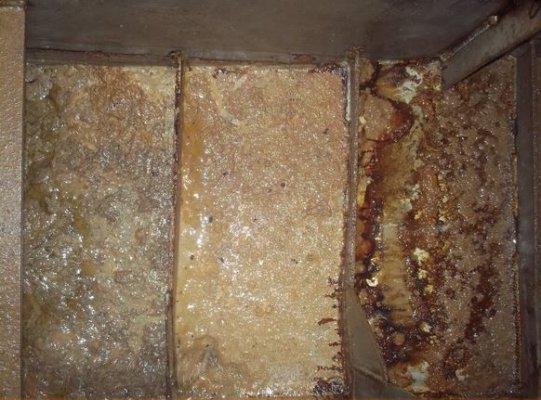
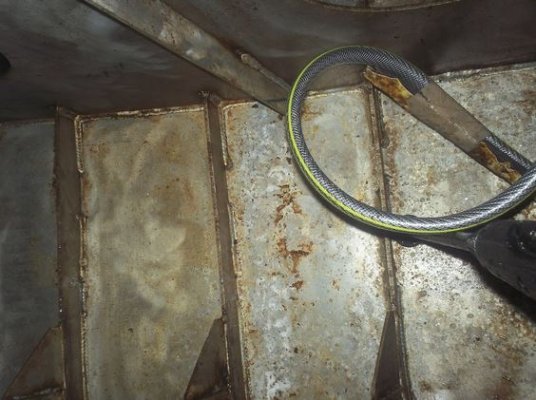

 requiring a hole to be added so we could clean up the debris hopefully preventing the tank itself rotting through... we'll see! I want to say that marking, drilling, and cutting out this hole took me maybe 45 minutes, but I didn't time it. It is the 6 inch size, not the full 8 inch that I used for the fuel tanks.
requiring a hole to be added so we could clean up the debris hopefully preventing the tank itself rotting through... we'll see! I want to say that marking, drilling, and cutting out this hole took me maybe 45 minutes, but I didn't time it. It is the 6 inch size, not the full 8 inch that I used for the fuel tanks.

